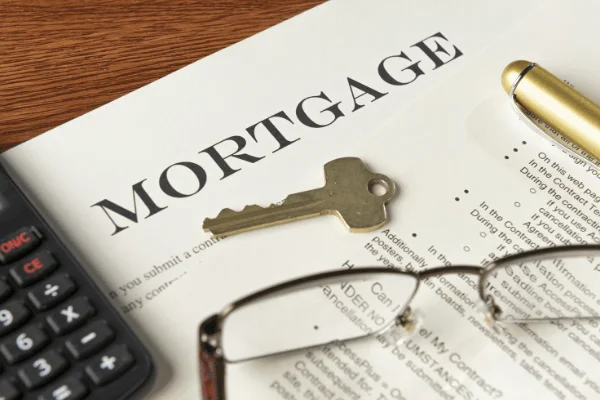News
How to Reduce your Mortgage Repayments and Save Money
As inflation increases and the cost of living rises, many homeowners are looking for ways to reduce spending. One way this can be done is by cutting the cost of their mortgage.
UK households are bracing themselves for the predicted increases in their monthly outgoings due to the increase in inflation and the escalating energy crisis. Alongside this is the rise in interest rates, which will have a serious effect on monthly mortgage repayment amounts.
We calculated that on average, since December 2021, on a standard variable mortgage, people would be paying an additional £656 per year in repayments. So, with tough times ahead, it is wise to consider some options for saving money on your mortgage.
Remortgage your home
This option will suit anyone approaching the end of their existing mortgage deal and should be the first option to consider when trying to reduce monthly repayments. In the current climate, it would be frugal to take advantage of the deals still on offer before the predicted increases in interest rates.
According to research, homeowners can save on average around £3900 per year by switching mortgages and locking in a good deal.
If you are not at the end of your current deal, you may have to pay your mortgage lender an ERC (early repayment charge), but it is useful to know that you can, in fact, switch mortgages six months before the end of your deal without being penalised.
Long-term fixed-rate mortgages
Fixing your monthly repayment amounts can give you a little peace of mind knowing exactly how much you will be paying, irrespective of fluctuating interest rates.
Locking into a good deal on a five-year fixed-interest mortgage could be the perfect solution to bringing a bit of financial stability to homeowners. There are still many great 5-year fixed-interest offers available on the market, particularly for buyers who require a higher loan-to-value (LTV) ratio.
The interest rate on a five-year fixed mortgage is higher than that of a two-year fixed mortgage; however, with the uncertainty of the economy, paying a little more on monthly repayments could pay dividends should the cost of living continue to increase, as expected, in the coming years.
Green mortgages
The concept of a green mortgage is to reward the buyer with an incentive to buy a home that is environmentally friendly. Lenders do this by offering mortgages with lower interest rates, therefore lower monthly repayments for the homeowner.
In order to qualify for a green mortgage, the property must have an EPC (Energy Performance Certificate). Ratings of A or B will give access to the best green mortgage deals, which can offer the biggest discounts in interest rates, cash-back incentives, and additional low-cost borrowing options.
Part and part mortgages
As the name suggests, this type of mortgage is on a partial interest-only and partial repayment basis. Mortgage brokers will tailor a part-and-part mortgage to suit your individual needs and will ensure a clause is included to enable you to make additional overpayments should you wish to.
It is important to consult with an experienced broker when considering a part-time mortgage, as this mortgage product is not suitable for all homeowners.
Overpayments on your mortgage
Monthly overpayments or a single lump-sum payment is a wise move while interest rates are still low. Investing your money in your home during these turbulent economic times could prove to be the best place to put your cash, with many other investment options being very risky.
Typically, most mortgages permit the borrower to overpay by up to 10% per year, and by taking advantage of this, you can make huge savings in the long term. Just an additional £50 per month can save you around £5000 and reduce your mortgage period by 2 years.
Offset mortgage
This type of mortgage links to your savings account and any savings you have in that account will be considered by the lender as mortgage overpayments. You will still have access to the funds in the savings account and be able to withdraw cash, but that will affect the interest rates on the mortgage.
Offset mortgages require that the mortgage and the savings account be with the same provider.
Size of your deposit
It goes without saying that the larger the deposit you have to put down on a property, the better access you have to great deals with low-interest rates. Your monthly payments will be lower, and long term, you will end up paying less for your home.
Discounts on Green Mortgages for Energy Efficient Landlords
With the upcoming changes to EPC (Energy Performance Certificate) rules, interest in green mortgages is on the increase, with many landlords qualifying for great deals on BTL mortgages.
Green mortgages offer incentives to landlords who are willing to upgrade their properties to a high energy efficiency level.
Although there are currently only a few lenders offering green mortgages, there is an expectation that many more lenders will follow suit in the near future. Green mortgages are available, not only to buy-to-let landlords but also to regular home buyers and those looking to remortgage. Buyers are offered a discount on interest rates for homes that are deemed to be energy efficient.
The first green mortgages were offered in June 2021 by specialist BTL lenders, Land bay. The response from buyers and landlords has been extremely positive, with the prediction that many more lenders intend to offer the same type of mortgage product in the near future.
What is an EPC?
An Energy Performance Certificate is a certificate that measures just how energy efficient a property is, which is then awarded a rating ranging from A to G, with A being the most efficient and G the least efficient.
A property that is highly efficient and emits minimal greenhouse gases will be assigned a rating of A, whereas a G rating indicates poor performance in both efficiency and emissions.
An EPC rating inspection is carried out by a qualified energy assessor, who will estimate the average energy use. The assessor will take into account things like hot water, electricity, and gas costs, as well as levels of carbon dioxide emissions when rating a property.
Energy Performance Certificates also suggest improvements that can be made to improve efficiency, with an estimate of the costs of the changes needed and the potential savings the improvements will bring.
EPC’s for rental properties
Rental properties have been required to have an EPC since 2007, resulting in the government now having energy data for around 50% of residential homes in the UK.
Approximately 58% of houses and flats have an energy-efficient rating between D and G. This is largely due to the large number of old houses in the UK and is not surprising when considering that around 20% of all housing was built before 1919.
In direct contrast, 95% of new homes in the UK have ratings between A and C, with the majority having a rating of B.
Landlords have been required, since 2018, to have a minimum EPC rating of E, but new government rules mean that this will change by 2025 when landlords will be required to improve to a C rating for all new tenancies. This will be followed by all existing tenancies reaching the same C rating by 2028.
The changes are due to the ongoing global warming crisis and are part of the government’s strategy to reach the environmental target of zero emissions by 2050. Housing is estimated to contribute 16% of total carbon dioxide emissions, making it imperative that all homes are improved when it comes to energy efficiency, irrespective of whether they are owned or rented.
For landlords to qualify for a discounted green mortgage, the property must have a rating of at least C. Green mortgages are also available for new-build homes.
How can I improve energy efficiency in my property?
There are a few simple things you can do to improve energy efficiency and lower carbon emissions in your home. You can make small changes, like changing lightbulbs, or bigger improvements, such as new double glazing, floor and wall insulation, and solar panels, all of which are highly effective.
The gas boiler is the biggest problem when it comes to carbon dioxide emissions, which can be improved by upgrading to a combination boiler or heat pumps, which are considerably more environmentally friendly than the old-style boilers.
Property Market Shake Up as Cheap Fixed Rate Mortgage Deals Disappear
For the last ten years or so, buyers have enjoyed the luxury of low-cost mortgages, but this long-cherished privilege looks set to end.
2021 showed record-low fixed-rate mortgage deals of less than 1%, but these rates are officially over, with interest rates nearly doubling over the last six months.
In October 2021, home buyers could take out fixed-rate mortgages at a low rate of 0.79%; however, the cheapest you can get right now on a 2-year fixed-term mortgage has risen to 1.25%. In real terms, this would mean that on a loan of £150,000, you could expect to pay an additional £375 annually. The lowest rate on a five-year fixed-term mortgage has risen from a low of 0.91% to 1.59%, which equates to approximately £565 in additional costs per year.
Buyers have enjoyed low-interest mortgage offers since the end of the global recession, when the Bank of England significantly decreased the base rate. When the COVID-19 pandemic struck, the base rate was at a record low of 0.1% but has since been increased to 0.5% with the expectation that it will rise further in the immediate future as the cost of living soars.
As a direct result of this base rate hike, lenders have followed suit with many increasing fixed rates by up to 0.5%, including Virgin Money, Halifax, and Santander.
The expectation is that rates will continue to rise and could go as high as 2% by 2023. The UK hasn’t seen rates this high since December 2008. Those currently on low-cost fixed-rate mortgages will find it difficult to find an equally good deal when their current term comes to an end.
Imran Hussain, the mortgage broker at Harmony Financial Services, commented: ‘The sub-1 per cent interest rate is almost certainly a thing of the past.’
If the rate is increased to 2% by the Bank of England in 2023, this would mean that on a property worth £150,000 on a two-year fixed rate, monthly payments would be £711, and on a 5-year fixed rate, they would be £723.
A financial adviser at Carl Summers Financial Services, Scott Taylor-Barr, added: ‘Those who were lucky enough to secure a fixed rate at the historic low rates we saw last year have to be aware of what lenders call ‘payment shock’, which is when rates rise while you are insulated on your fixed rate and exit that deal into a much higher interest rate market.
‘All you can do is ensure you budget with a reserve to allow for an increase in payments when your deal ends.’
Lock in now: If you can
Approximately 75% of buyers are locked into fixed-rate deals that last between one and thirty years. Other homeowners are on variable-rate mortgages and are therefore subject to the rise and fall of interest rates. Should the Bank of England push the rate further to 2%, this would mean a property worth £150,000, with an average standard variable rate of 4.5, would have to pay £1,592 in additional costs per year.
Mortgage brokers are urging homeowners to do all they can to switch to a fixed-rate mortgage before we are hit with further interest rate increases if they can.
David Hollingworth, of L&C, says: ‘Taking advantage of the current crop of deals will help to weather the storm.’
He went on to say that many lenders will make mortgage rate offers that they will honour for up to six months, giving buyers and homeowners the opportunity to get a good deal before it’s too late.
Look into long-term fixed-term deals
Longer-term fixed-rate mortgages are becoming more and more popular, with the cost of a five-year fixed-rate mortgage not being much higher than that of a two-year fixed-rate deal. With this in mind, there is a trend among buyers to consider taking out even longer, ten-year deals. The best deal available on a 10-year deal is currently with Lloyds at a rate of 1.66%.
Dominik Lipnicki, director at Your Mortgage Decisions Ltd., says: ‘Many borrowers are not just concentrating on the lowest possible monthly payment now.’
Graham Cox, director of Self Employed Mortgage Hub, adds: ‘We’re finding borrowers who aren’t looking to move, locking in on a longer period of five or seven years.’
He did warn, however, that long-term rates are not always the best choice for every buyer, particularly if they have to move: ‘Although they will be portable, there is no guarantee you will meet the lender’s criteria then.’
Can a cheaper mortgage end up costing more?
A great number of mortgages have an early repayment fee, but lenders usually permit borrowers to repay up to 10% extra, penalty-free, every year.
By paying an extra £100 per month on a mortgage of £150,000 with a 1% interest rate, you could clear your loan almost 4 years early and save around £3,374. Although this may seem like a good move, it is vital that consideration of other debts be made first.
Mr Hollingworth stated, ‘Although the cost of living rise will cause many to rethink their budgeting, there could still be room for some overpayments to be made now while enjoying a low rate.
‘That will help reduce the interest bill and the mortgage balance to save money overall and to put them in a better position to cope with a potentially higher-rate environment when the current deal comes to an end.’
Should I pay to leave early?
It may be cost-effective to just pay the ERC (early repayment charge) if a low-fixed-interest rate mortgage can be found, but borrowers should calculate whether it is in fact worth it before making any commitment.
Managing director at The Mortgage Girl, Samantha Bickford, says: ‘A client on a great rate of 1.79 per cent with a year left came to me this week willing to repay the £700 exit fee to secure a new fixed rate deal for as long as possible.
‘We secured a deal at 1.89 per cent for the next five years to take him to the end of his mortgage term.’
But experts say rates are relatively low and are not likely to surge.
Rob Peters, principal at Simple Fast Mortgage, says, ‘We have had an unprecedented period of all-time low-interest rates. Those with highly leveraged debt burdens will be the first to feel the pain.’
Bigger Mortgages Could be on the Cards for Buyers as Bank of England Considers Relaxing Affordability Tests
The Bank of England has said it may relax the rules surrounding the affordability of mortgages so that buyers will be able to apply for higher-value homes than they would normally be able to. This will allow people to financially stretch themselves in order to purchase property.
A consultation by the Bank of England has been arranged to discuss the changes that will be made to the affordability tests that lenders are using to assess potential buyers. This will inevitably lead to more borrowers being able to access larger mortgages. This consultation is a direct result of concerns that this will further drive up house inflation.
It is a fact that stringent affordability tests that don’t represent current borrowing conditions have prevented many first-time buyers from taking out a mortgage, which could be considerably cheaper than rental rates.
What changes will be made?
The rules that will be affected will be the affordability test and the loan-to-income limit, both recommendations established in 2014 by the Financial Authority Committee. These rules were created with the intention of preventing buyers from getting themselves into financial difficulty by taking out mortgages that they could not afford.
The rules provide limits on both loan-to-income ratios and affordability, which provides lenders with a “stress” interest rate so that they can assess buyers’ ability to keep up with mortgage repayments.
A loan-to-income ratio is the rate at which banks and lenders will calculate the size of the mortgage they will offer by using the buyers’ annual salary. This rate has been set at 4.5 times the annual salary since 2014.
The affordability test involves the buyer proving that they can afford to keep up with repayments should the interest rates increase by 3% above the standard variable rate of the lender.
Standard variable rate mortgages (SVRs) typically follow on from a fixed rate mortgage when the term has come to an end and are generally more expensive. Many buyers will switch to a new fixed mortgage deal to avoid an SVR mortgage.
Although these rules stopped many from accessing mortgages, only 6% (approximately 30,000 mortgages) of buyers were forced to accept lower-value loans.
The expectation is that the loan-to-income rule will remain as it currently is, but the affordability stress test will be relaxed. This will mean that the repayment amount will be based on predicted market interest rates over the coming 5 years, or an increase of 1% on the current rate, whichever is greater.
Mortgage technical manager at John Charcoal, Nicholas Mendes, commented: “The scrapping of current rules would be welcome by homeowners and brokers alike, as this would be a boost for the market given the ever-increasing property prices”.
‘This will give homeowners, at least in the short term, the ability to borrow more.’
Despite these rule changes, the ever-increasing cost of living could completely nullify the effects of the change, as household bills are on the rise, and lenders will need to factor this in when performing the affordability test.
‘We are expecting to see inflation continue to increase into 2023,’ added Mendes, ‘with multiple base rate rises, lenders could choose not to make any changes because predicting where rates could be in 5 years’ time seems almost impossible.
‘As the costs continue to escalate, we could see lenders exercise caution and start to consider other factors to ensure the mortgage remains affordable.’
Rising rates and escalating inflation have resulted in many lenders, including TSB, Santander, and Barclays, altering their affordability stress tests to reflect the current economic arena.
Mortgage consultant at Private Finance, Chris Sykes, said: ‘We can expect more lenders to take these costs into consideration moving forward, especially after the removal of the energy price cap in April.
‘This means we can expect tighter affordability for some and lower loan amounts available than was previously the case.
‘This could reduce people’s maximum borrowing, which in turn could be a problem for those already in a tight situation.
‘We are already seeing the impact these changes are having on Barclays, with a recent client able to borrow a very significant £100,000 less following the implementation of the changes to their affordability calculator.’
This could present problems, not only for first-time buyers but also for people looking to remortgage their property. It will prevent many owners from being able to remortgage their homes, forcing them to remain on more expensive monthly repayments.
In addition, the increased price of the average home will further contribute to the difficulties first-time buyers are having trying to get a foot on the property ladder.
Rightmove Predicts Booming Year for the UK Housing Sector
The past 12 months have brought the kind of property market activity that has not been seen for some time in the UK. House prices have hovered at all-time highs, demand has outstripped supply by a clear mile, and the return of the 95% LTV mortgage was welcomed by many thousands of first-time buyers.
Rightmove believes that 2022 could be another incredible year for the housing sector. Last year, the company recorded the most explosive performance in the housing market since going into business 21 years ago. In turn, Rightmove now believes that housing market activity will return to pre-pandemic levels before the end of the year, with no sign of a slowdown in sight.
Even with inflation at a 30-year high, Rightmove believes that unprecedented demand for quality homes in all key regions of the UK will ensure the sector maintains its momentum. The market’s performance is also set to be bolstered and perhaps even accelerated by the rapid removal of all remaining pandemic restrictions.
Record performance at Rightmove
According to the latest figures published by Rightmove, the company achieved a year-on-year profit increase of an impressive 67%, hitting an annual pre-tax profit of £226 million for the year ending December 31, 2021.
During the same time, total revenues were up by approximately 50% to reach £305 million. Full-year revenues were up 5% compared to pre-pandemic figures in 2019 and a huge 48% higher than recorded at the height of the pandemic in 2020.
“As the market normalises, we expect the number of transactions to return to pre-pandemic levels,” Rightmove said in a statement.
“We remain alert to the macro environment, but Rightmove is not materially impacted by the property market cycle other than in the most extreme circumstances.”
An operating margin of 74% was reported by Rightmove for the period. The FTSE 100 company collects most of its revenues from real estate agents and customers who pay to advertise their homes via its online channels.
Rightmove predicted further growth in revenues as the company continued to scale back the discounts it had been offering during the COVID-19 pandemic to encourage buyers and sellers to make their respective moves.
Shares in the company were up an impressive 5.3% in London early last Friday morning.
A generally positive outlook
The housing market in general is predicted to record a stellar performance throughout the year, with average house prices having once again increased by 9.5% in February compared to the same month in 2021. Average UK property prices are once again hovering at all-time highs in most regions.
On the whole, the average purchase price of a home in the UK is now just under £349,000, up almost 10% since the same time last year, which is the highest annual rate of growth recorded in almost a decade.
In just two years, average UK house prices have increased by around £40,000, effectively pricing millions of would-be buyers entirely out of the market.
February Sees the Biggest Rise in Property Prices for Two Decades
According to Rightmove, February has seen property prices increase by a whopping 2.3%, which is the highest rise in a month for 20 years. This brings the average house price to a record-breaking £348,804, an increase of £7,785.
Home prices are an incredible 9.5% higher than they were in the same period in 2021, signifying the biggest annual growth rate since September 2014.
Reports from Rightmove suggest that the reason for this price increase can be put down to the “fear of missing out” in the current competitive housing climate among both buyers and sellers. Agents have reported a 16% increase in inquiries from potential buyers.
Data shows property listings are up by 11% when compared to the same period in 2021, indicating that sellers are opting to list their houses for sale before finding a new property to buy.
When compared to January 2021, requests for home valuations were also up by 11%.
The highest annual increase in inquiries has been seen in the capital, and coupled with the biggest property price rises since 2016, London continues to lead the way. This is largely due to the end of the pandemic, resulting in a renewed interest in buyers returning to the city.
Marc von Grundherr, director of London estate agent Benham and Reeves, commented: “There have been numerous signs that the London market is starting to turn in recent months, and it is very likely we’ve now seen the back of the capital’s pandemic house price slump.
“The start of 2022 has been exceptionally busy, and buyer enquiries have shot through the roof as London home buyers try to get in quick and secure a purchase before house prices start to accelerate.
“It’s only a matter of time before this initial buyer demand and the sharp increase in asking prices start to filter through to completed sales, at which point we expect home sellers across the London market will further up their asking prices as a result of this growing market confidence.”
North London estate agent and former RICS chairman, Jeremy Leaf, said: “The market is continuing where it left off at the end of last year. Although Rightmove‘s figures are based on asking, rather than selling, prices, there still seems to be scope for further increases.
“Demand hasn’t been blown off course so far by the weather, rising interest rates, or inflation, as we have recorded a significant proportion of buyers who missed out in some of last year’s competitive bidding returning for another try.
“Listings are increasing, but not fast enough to satisfy appetites for houses in particular, which is inevitably reducing the number of transactions.
“Looking forward, stretched affordability will mean prices cannot keep rising at the same pace, but certainly there’s no sign of any significant softening yet.”
Buy-to-Let Changes Landlords Need to Know in 2022
Over the next few months, buy-to-let landlords are to be hit by a raft of tax changes. From stamp duty rates to capital gains tax to buy-to-let tax relief alterations, things look set to become even more difficult for BTL landlords running businesses in the UK.
Income Tax Rates 2022
The current personal allowance (the amount you can earn before paying income tax) is up £70 from last year, now standing at £12,570. This is to remain fixed until 2027 at the earliest.
For this tax year, BTL landlords generating income between £12,571 and £50,270 will be taxed at a rate of 20%, those earning above this £50,270 threshold will be subject to 40% taxation, while the £150,000 threshold paves the way for 45% or higher rate taxation.
Capital Gains Tax
One welcome change to BTL legislation is the extension of the time landlords have to report and pay capital gains tax, following the sale of a property.
Reduced significantly from 22 months to just 30 days in April 2020, the grace period has now been doubled to 60 days.
Increases in capital gains tax had been predicted for some time, but are set to remain unchanged for the time being.
Tax Credit
For this tax year, BTL business owners will again be able to claim a tax credit worth 20% on interest payments, rather than deducting mortgage costs from their rental income.
It has now been five years since the government introduced its controversial tax changes for BTL landlords, gradually reducing mortgage tax relief each year until it was wiped out entirely last year.
Companies House data suggests that more BTL landlords set up limited companies when purchasing new rental properties last year than ever before, in order to avoid higher rate personal income taxation by instead paying corporation tax at a fixed rate of 19%.
Buy-to-Let Stamp Duty
All stamp duty incentives for BTL property purchases in England have now ended, which up until October 2021 provided buyers with the opportunity to save (on average) £2,000.
As of now, normal stamp duty rates have resumed for investors in England, as follows:
| Property price | Stamp duty rate | |
| £0 — £125,000 | 3% | |
| £125,001 — £250,000 | 5% | |
| £250,001 — £925,000 | 8% | |
£925,001 —
£1.5 million |
13% | |
| £1.5 million + | 15% |
Stamp duty obligations differ slightly for BTL property purchases in Scotland and Wales.
Other Buy-to-Let Regulation Changes
Along with the alterations to tax obligations outlined above, several further regulatory changes for BTL landlords have been outlined by the government.
Key proposals for the year ahead (part of the Levelling Up White Paper published by the government) include:
- A national landlord register
- the end of Section 21 evictions
- a minimum standard for all rental properties
- more fines and bans for rogue landlords
Legislation is also set to be introduced on the installation of CO2 alarms in BTL properties, along with the requirement for rental homes to meet elevated energy efficiency standards by law.
Average Rate Growth Hits Five-Year High, ONS Reports
Monthly rent prices are increasing faster than at any time recorded since February 2017, new figures from the Office for National Statistics suggest. A further 2% increase in England was noted in the year leading up to January, while rents in Scotland were up 2.6% during the same time and 1.4% in Wales.
Last month, the average cost of renting a home in the UK reached a new high of £969 per month.
Speaking on behalf of Hargreaves, senior personal finance analyst Sarah Coles commented on the worrying trend of already cash-strapped renters facing even bigger financial challenges.
“Rents are rising faster than any time in the past five years, forcing tenants to choose between squeezing their spending even harder or uprooting their lives,” she said.
“Either way, they’ll end up worse off.”
East Midlands records the fastest growth in the UK
The fastest increase in private rental costs was noted in the East Midlands, up around 3.6% year-on-year. Despite being home to the UK’s most expensive rental properties, the slowest growth over the same period was recorded in London: an increase of just 0.1%.
With no let-up in sight, experts are forecasting further rent hikes for the foreseeable future, at least.
“It looks like rises are set to go further too,” added Coles.
“Those who can’t stretch their finances to cover their costs face the horrible upheaval and expense of moving home. If their current landlord withholds any of their deposit, they’ll have to find more cash to cover this, on top of the moving costs themselves, which means they’ll be worse off, whatever they do.”
“The Royal Institution of Chartered Surveyors research found that a slide in the number of properties for rent and another rise in tenant numbers are filling agents with confidence that rental prices will be on the rise for months or even years. It expects rent to rise to an average of 5% over the next five years.”
A further blow to prospective homeowners
With the housing sector maintaining its record-breaking momentum built up over the past 12 months, average property prices continue to price millions of would-be buyers out of the market entirely.
Over the course of the year leading up to January, average house prices in England hit a new high of £293,000, while the average cost of purchasing a home in Wales hit £203,000. Across the UK, the average market value of a home is now £275,000, the highest in history.
Alan Fitzpatrick, vice president of lending operations at mortgage specialist Hibito, explained the significance of this year-on-year increase.
“This ONS data reflects the year of the Stamp Duty Holiday, from the first deadline in March, the extended deadline in June, and the lower threshold, which was payable until the end of September,” he said.
“To put this incredible one-year price rise into more context, £27,000 would be the 2022 take-home salary post-tax of someone earning £35,000 (more than the UK average full-time salary, which is £31,285).”
Looking ahead, Quilter mortgage experts see an eventual slowdown occurring, but not on such a level as to prove any real value to struggling buyers or renters.
“Any hopes of a downward tick in house prices have once again been dashed,” she said.
“While a reduction in house prices has not yet materialised, it seems inevitable that there will be a slowdown during the coming year, and there are many factors currently at play that could contribute.”
“While the scales of supply and demand remain firmly tipped in favour of the nation’s home sellers, there’s a good chance that the high rate of house price growth seen during the pandemic will now subside, replaced by more incremental gains during the year ahead,” he said.








